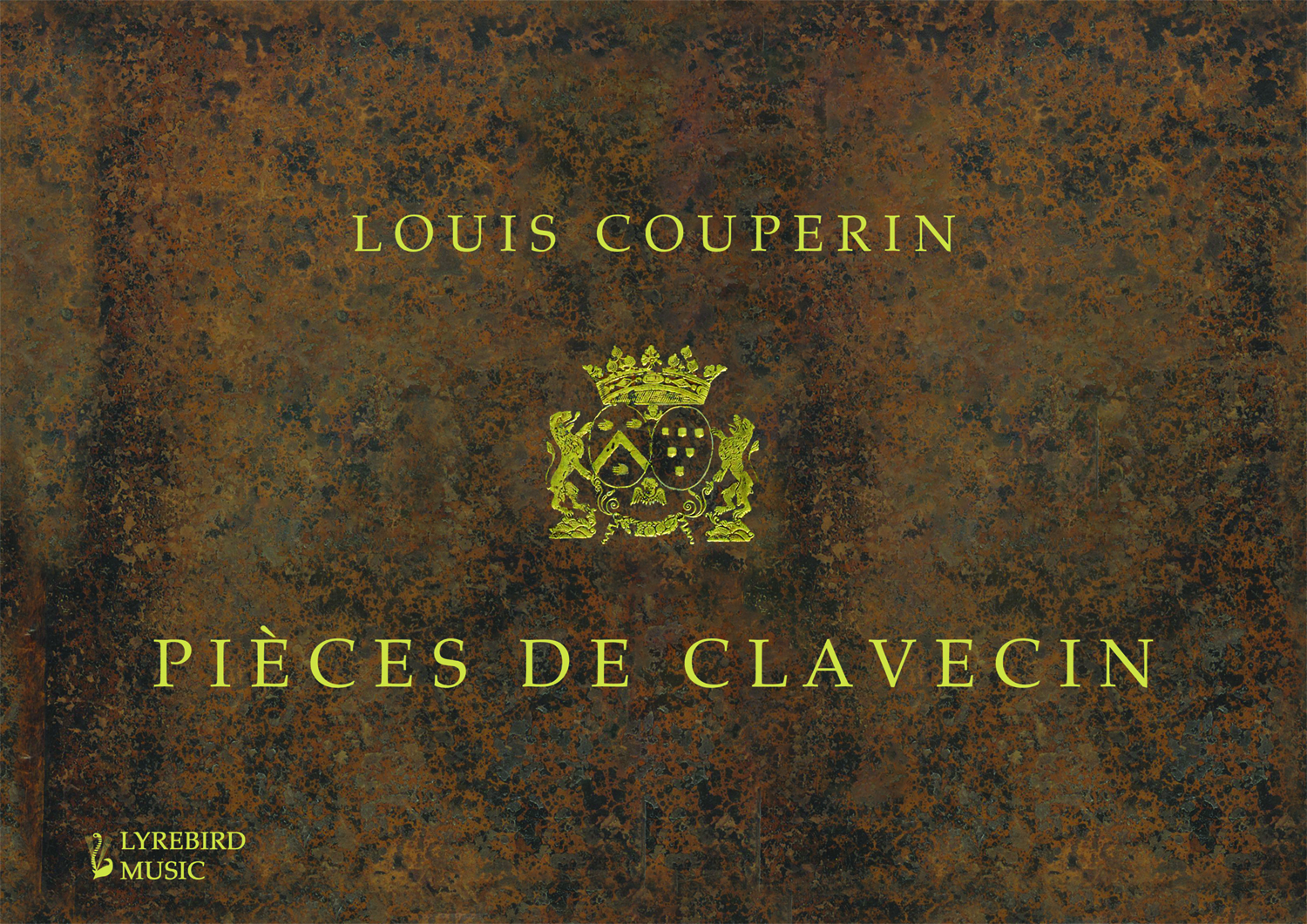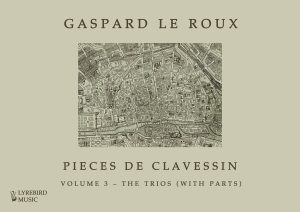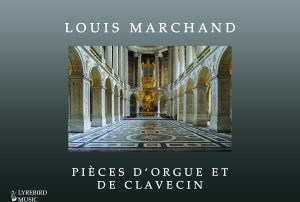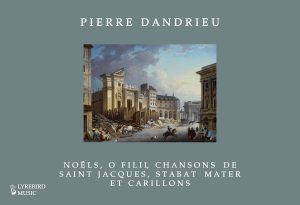LBMP–035: Louis Couperin – Pièces de clavecin
From €45.45
ISMN: 979-0-706670-6-38 (hardback) | 979-0-706670-6-69 (wire)
Edited by Jon Baxendale
- A handsome edition available in hardback and wire-bound volumes
- The first complete edition of Louis Couperin’s harpsichord pieces since 1985
- The only commercially available edition
- Full preface and commentary that discusses the composer, genre and aspects of performance style that includes ornamentation, notes inégales and playing the preludes
- Three available formats
- Colour hardback cover with a matt finish (choice on checkout)
- Wire-bound with soft colour cover (choice on checkout)
- Tablet (PDF – one download available for 5 days)
Prices vary according to your needs. Please first choose the format you require.
Please note that if you are an EU customer, the prices include the VAT for your area. This is collected for orders under €150. EU customers whose orders exceed €150 will see the VAT until checkout, at which point taxes will be removed.
Harpsichord & Fortepiano
Louis Couperin is one of the most erudite composers of seventeenth-century France. Uncle to François, he moved to Paris in c. 1650, became a viol player at the court of Louis XIV and was appointed organist at the important church of Saint-Gervais in 1653, only to die an untimely death in 1661. His legacy as a harpsichord composer cannot be overstated: his so-called préludes non mesurés, which are unbarred and contain no rhythm, have been baffling performers since Couperin was ‘rediscovered’ in the early twentieth century; the dances are bold and innovative and display a variety of influences that include lute music and the composers Johan Jacob Froberger and Girolamo Frescobaldi.
This is the first complete edition of Couperin’s harpsichord pieces since 1985. It uses the two most important French collections of seventeenth-century keyboard music as its principal sources, the Bauyn and Parville manuscripts. In a lengthy preface, editor Jon Baxendale takes a detailed look at the sources and the music and provides notes on performance, including a comprehensive look at the preludes and their interpretation.
Lyrebird music’s release of Louis Couperin’s Pièces de clavecin last year marks something of a milestone for this key 17th-century repertoire. This impressive publication, incorporating significant departures from earlier editions, offers something truly new to the field.
The two principal sources of Louis Couperin’s harpsichord music are the so-called Bauyn and Parville manuscripts. As detailed in the preface, it is difficult to assess which of these sources is more authoritative, given that both contain errors of repetition and omission. Bauyn has been chosen as the principal source here since, as the editor explains, watermark analysis proves it to be the earlier of the two.
In all of Lyrebird’s editions, there is a mission to present as many visual aspects of the source material as possible. Players will see a significant difference in the appearance and layout of the pieces compared with, for example, Alan Curtis’ edition for Le Pupitre, especially in terms of original beaming and ornamentation. This style of presentation allows readers to be influenced by subtleties such as hand shapes, articulation and gesture. The issue of ornamentation is challenging in these pieces, given that the Bauyn manuscript is nearly bereft of ornaments. None are added here by the editor, but those present in the Parville manuscript have been transferred where sensible. Players using this edition will be confident to add their own, using ideas for guidance in the preface.
Referencing the debates of the past decade, Baxendale’s introduction concisely counters Glen Wilson’s argument (in his Early Keyboard Journal article ‘The Other Mr Couperin’, 2013) that Charles (not Louis) Couperin might be composer of these pieces. Demuring, Baxendale refers to the ‘restricted’ and liturgical style of organ music of this period, believing that ‘organ music was restricted in style because it had to be functional” and that the ‘new, modish and experimental’ nature of the compositional language of the harpsichord goes some way to explain the difference in nature of Louis’ organ works. Fundamentally, he disagrees with Wilson’s argument that the Louis’ missing forename in either principal source points to a different authorship, Louis’ brother Charles (father of François le Grand).
The prefaces of Lyrebird’s edition have earned a strong reputation for their detailed insight into performance practice. Here, Baxendale discusses rhetoric with regards to Couperin’s harpsichord music in a far more detailed way than his forebears, and his comments on the rhetorical language of the preludes is a significant contribution to the pedagogical field on these works. His didactic writing here is inspired, and guides readers/players in areas from harmonic direction, use of tempo/movement, breathing/phrasing and inequality, to figures of speech and rhythmic devices, drawing on examples in a compelling way.
The notation of Couperin’s preludes is notoriously difficult to interpret. Baxendale’s section on these pieces features diagrams with coloured notes to indicate the main progressions. Relating this to the score, he suggests meanings for the curved and vertical lines, helping players interpret groupings appropriately. For Baxendale, it is the placing of the curved lines, not their meaning, which is sometimes ambiguous. He guides his reader into the intricacies of declamation, harmonic working, ornamental shapes and fingering.
This quality release sits well within the rapidly growing Lyrebird Music catalogue, which encompasses a range of keyboard repertoire, ranging from 16th-century collections to César Franck. The print quality is high, with a clear typeface and thoughtful pagination. This well-priced edition reflects a huge amount of original research, care and detailed preparation, with issues of performance practice at its core. I would recommend this publication highly to keyboard players who would like to get closer to the original notation of the sources. This edition, equally suitable for the seasoned player and less experienced, will satisfy every thinking musician.
Thomas Allery
Harpsichord & Fortepiano, Spring 2023
Recent Posts
Your Shopping Cart
Archives
Categories
Recent Posts
- A Few Notes on Interpreting Louis Couperin’s Preludes March 27, 2025
- The Curious Life of Louis Marchand, Organiste du Roy March 23, 2025
- Grigny, Bach and Walter – A reappraisal of the sources March 22, 2025
- My Ladye Nevells Book: its history, scribe and the Byrd connexion March 20, 2025
- Adding ornaments to Grand siècle organ and harpsichord music March 15, 2025
Categories
- Blog (7)
- Testimonial (4)
- Uncategorized (1)




